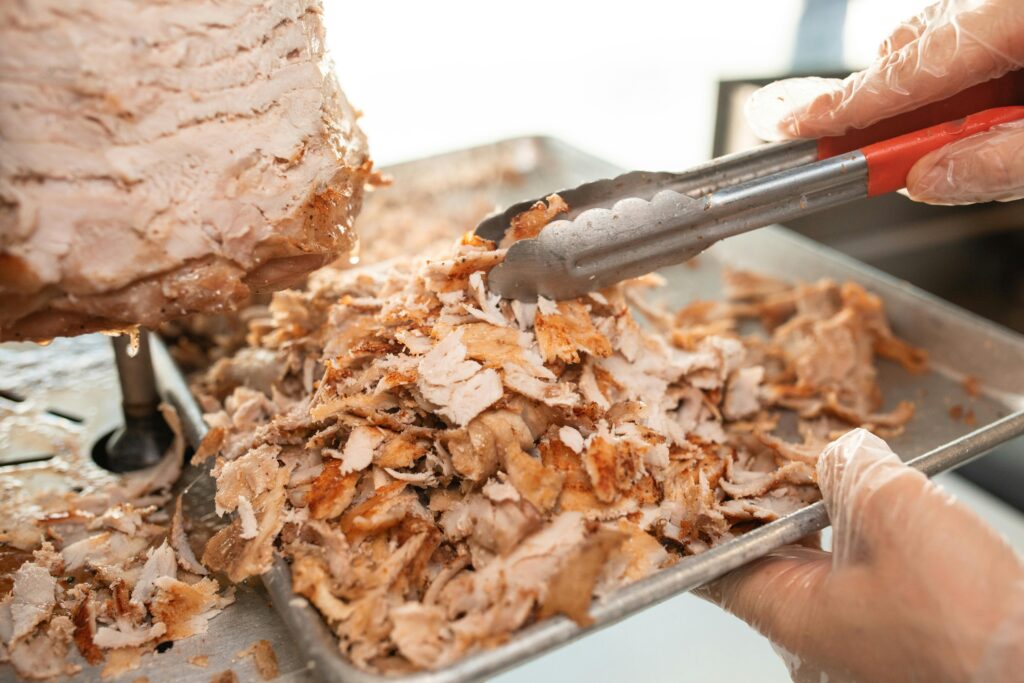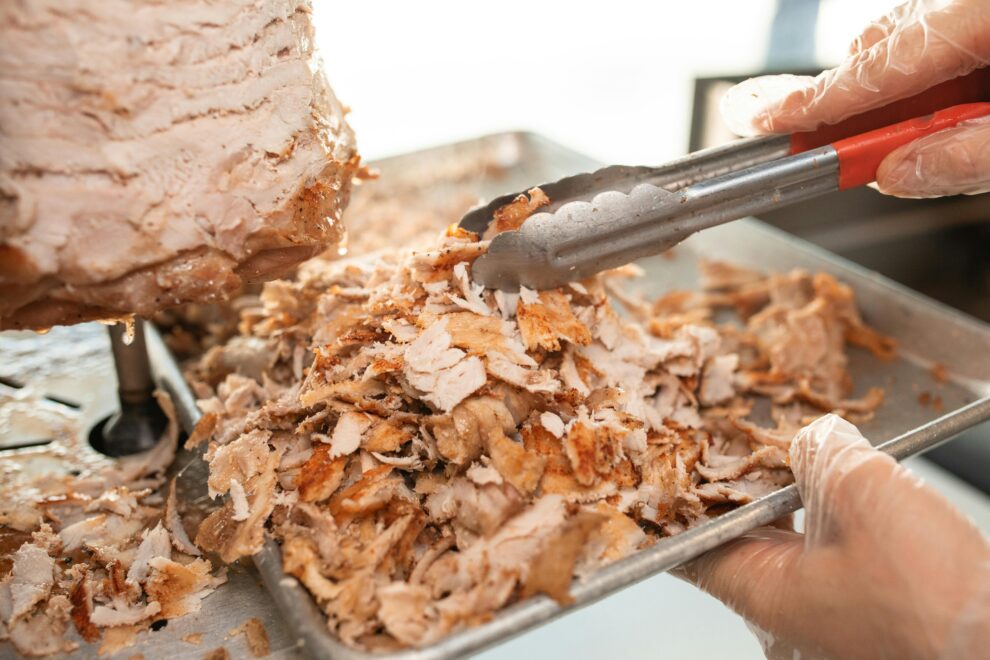While both Kosher and Halal dietary practices originate from a deep-rooted religious ethos emphasizing purity and ethical treatment of animals, they cater uniquely to the Jewish and Muslim communities respectively. It’s often noted that those who follow Halal often find it acceptable to dine at Kosher establishments, given the strict adherence to dietary laws observed by Kosher services. However, the reciprocity is less common due to more stringent regulations in Kosher practice.
This guide explores the similarities and distinct differences between these two dietary laws, providing insights into why Kosher is generally more restrictive, and highlighting the nuanced practices within each faith.

Foundational Texts and Basic Principles
Central to understanding these dietary laws are the religious texts that lay their groundwork. Kosher laws are based on the Torah and further elaborated in the Talmud and Shulchan Aruch. Halal practices are guided by the Quran and Sunnah. Both religions require that foods consumed must not only be healthy but also conform to ethical standards of preparation.
Key Similarities and Differences in Dietary Standards
Both Kosher and Halal diets strictly prohibit the consumption of pork and its by-products. Additionally, the method of slaughtering animals is pivotal in both practices, involving a swift, deep incision with a sharp knife to the throat, ensuring minimal suffering of the animal. This method is known as Shechita in the Jewish tradition and Dhabihah in the Islamic tradition. The similarities extend to prohibitions against carnivores, scavengers, reptiles, amphibians, and the requirement that blood must be fully drained from the carcass.
However, there are significant differences:
- Kosher laws prohibit the mixing of meat and dairy, and also ban certain types of seafood, such as shellfish. Only fish with fins and scales are permissible. The laws also specify that only a trained Jew can perform the slaughtering, and additional dietary restrictions apply during religious observances such as Passover.
- Halal laws are less restrictive regarding seafood, permitting all types, including shellfish. Meat and dairy can be consumed together, and the slaughter must be performed by a Muslim, who recites a prayer during the process. Alcohol and intoxicants are completely prohibited in Halal.
Details on Permissible and Prohibited Animals
In the Kosher diet, permissible animals include cattle, sheep, goats, deer, and certain domesticated birds like chicken and turkey. On the other hand, Halal allows for a broader range including camels and all birds except birds of prey. Both dietary laws forbid carnivorous animals and most insects, with the exception of locusts in the Halal diet, albeit one rare locust is Kosher.
Ritual Slaughter and Preparation
In both traditions, the slaughter is conducted without prior stunning to ensure the animals are healthy and conscious at the time of killing, which is believed to contribute to the purity of the meat. The Kosher practice requires a special type of knife and prohibits any tearing during the slaughter, while Halal also mandates the animal to face Mecca during the process. The method of blood drainage and avoidance of certain parts of the animal like the sciatic nerve in Kosher is strictly adhered to.
Handling of Produce and Other Foods
When it comes to fruits and vegetables, both diets generally permit their consumption, provided they are free from insects and any form of contamination. Kosher laws go further to demand thorough inspection and cleansing to ensure no insects are present, a detail less emphasized in Halal.
With Kosher, this is often manifested in the “checking” and washing of generally buggy produce like leafy greens and berries.
Kosher and Halal Certifications: Ensuring Compliance
Maintaining kosher and halal certifications involves rigorous adherence to dietary laws, regular inspections, and strict guidelines regarding equipment and ingredient sourcing. For Kosher, this includes having a dedicated supervisor and separate processing lines for meat and dairy. Halal certification also focuses on the avoidance of all prohibited substances and ensuring all meats are slaughtered according to Islamic rites.
Dining at Non-Certified Establishments: A Major Prohibition
Both Kosher and Halal dietary laws rigorously restrict followers from eating at establishments that are not certified according to their respective standards. For Kosher observers, any food prepared with non-kosher utensils or surfaces is deemed non-kosher, making it prohibited. There is also a significant concern about the kashrut (kosher status) of ingredients, preparation areas, and utensils used, leading most Orthodox rabbinical authorities to forbid eating in non-kosher restaurants.
In the case of Halal, consuming any non-halal foods such as pork, alcohol, or meat not slaughtered per Islamic rituals is prohibited. Concerns about cross-contamination in non-halal establishments are significant, although some exceptions are made for vegetarian or vegan items if there is assured no risk of contamination with non-halal substances.
Toveling and Kashering: Unique Kosher Practices
An exclusive practice within Kosher observance is toveling, which involves the ritual immersion of new metal utensils in a mikvah (ritual bath) to make them suitable for preparing and consuming kosher foods. This requirement stems from a Torah commandment and applies to metal utensils like pots, pans, and cutlery that come into direct contact with hot food. Glass utensils generally do not require toveling, nor do utensils used only with cold foods. This practice emphasizes the ritual purity necessary for utensils used in kosher food preparation and has no equivalent in Halal practices.
Following closely is the concept of kashering, another unique aspect of Kosher observance. Kashering refers to the process of making utensils, cookware, and kitchen surfaces ritually pure and fit for kosher food preparation after they have come into contact with non-kosher substances. This involves a thorough cleaning followed by a purging process using boiling water or direct heat to remove any residue or absorbed taste of non-kosher foods. The methods applied—boiling, burning, or leaving items unused for a certain period—vary depending on the material involved, such as metal, glass, or wood.
Moreover, separate sets of dishes, pots, pans, and utensils are maintained for meat and dairy products, which cannot be kashered together. Ovens and kitchen counters particularly require a complex cleaning and heating process to kasher them, typically conducted under strict rabbinical supervision to ensure adherence to Jewish laws. Unlike Kosher practices, Halal guidelines focus more on the permissibility of ingredients and proper slaughtering methods, without prescribing specific purification rituals for kitchenware and surfaces. Thus, while both Kosher and Halal practices require segregation of certain foods and utensils, only Kosher mandates the comprehensive process of kashering to reestablish a kitchen’s purity for kosher food preparation after exposure to non-kosher elements.
Handling of Vegetables and the Separation of Meat and Dairy
Both Kosher and Halal diets allow most plain, unprocessed fruits and vegetables, provided they are free from insects and impurities. Kosher laws require thorough inspection and cleaning to ensure no insects are present, a standard not explicitly required by Halal, although general cleanliness and avoidance of impurity are encouraged.
A significant divergence between Kosher and Halal is in the handling of meat and dairy:
- Kosher laws strictly prohibit cooking, processing, or consuming meat and dairy together. Kosher kitchens typically have separate utensils, cookware, and dishwashers for meat and dairy, and a waiting period is required between consuming meat and dairy products.
- Halal laws, in contrast, allow the combination and consumption of meat and dairy products without any restrictions.
Specific Guidelines on Egg Consumption and Other Practices
Kosher laws mandate that each egg be checked for blood spots before use, as the presence of blood renders the egg non-kosher. This practice requires cracking each egg into a clear dish for inspection, a stringency that remains even with the rarity of fertilized blood spots in commercially produced eggs. During Passover, an even stricter standard is applied to eggs.
Halal laws, meanwhile, do not specify the need to check eggs individually, though general guidance suggests avoiding any contaminated or unhygienic foods. Certain halal certifiers may impose additional standards, such as avoiding eggs from farms that practice induced molting through starvation.
Certification and Compliance
Both dietary laws rely on rigorous certification processes to ensure compliance with their stringent guidelines. Kosher certification ensures that all equipment and food preparation areas are kept separate for meat, dairy, and pareve items. Halal certification focuses on proper animal slaughter methods and the avoidance of prohibited ingredients like pork and alcohol.
Navigating the Complexities of Kosher and Halal Dietary Laws
The Kosher and Halal dietary practices, rooted deeply in their respective religious traditions, not only reflect the ethical and spiritual values of Judaism and Islam but also address the practical aspects of daily dietary observance.
While both dietary systems are stringent in their prohibition of certain foods and in their slaughtering practices, significant differences exist, particularly in the handling of meat and dairy, the types of seafood allowed, and rituals such as toveling and kashering that are unique to Kosher practices. Additionally, the restrictions against dining in non-certified establishments underscore the importance of maintaining purity according to the dictates of each faith, with each system implementing its own set of guidelines to minimize the risk of dietary transgression.
It is essential to recognize that within these frameworks, variations may occur due to different interpretations and practices among sects within each religion. These differences are not always clear-cut, and as such, they require those who observe these laws and those who serve these communities to be continually informed and sensitive to these variations.



